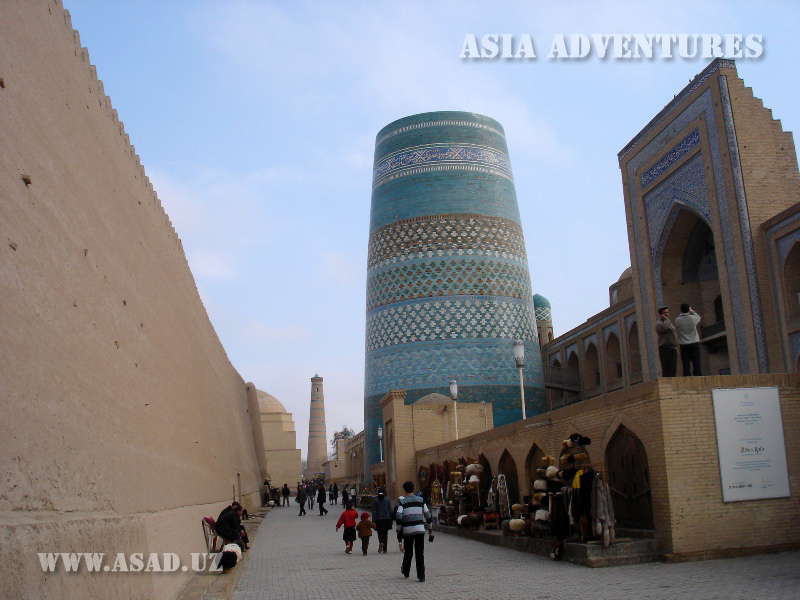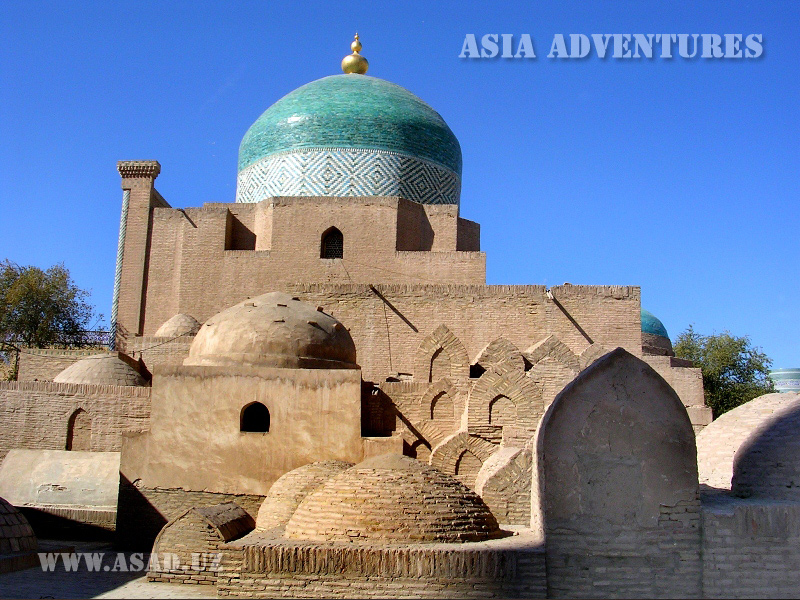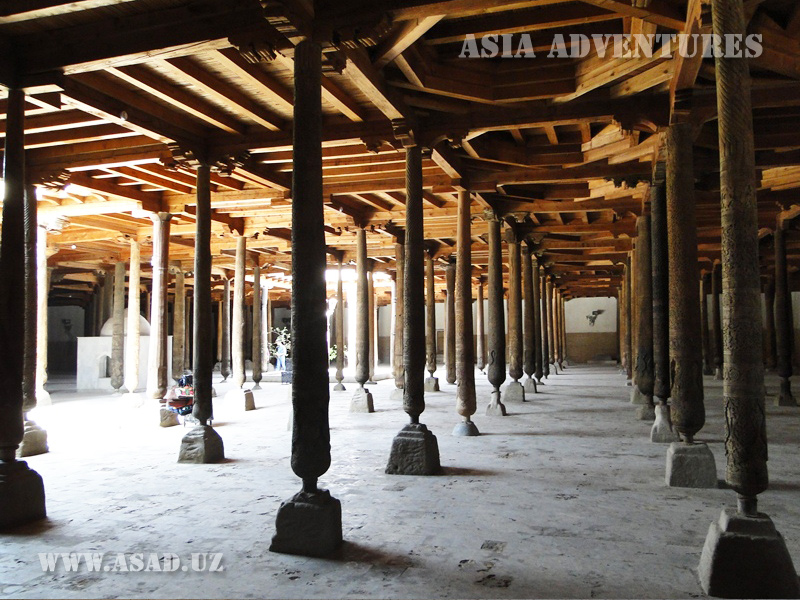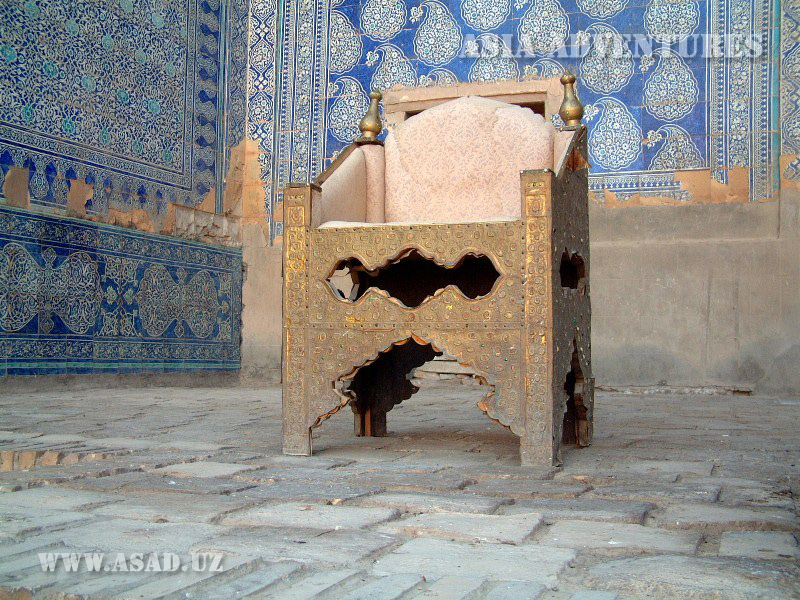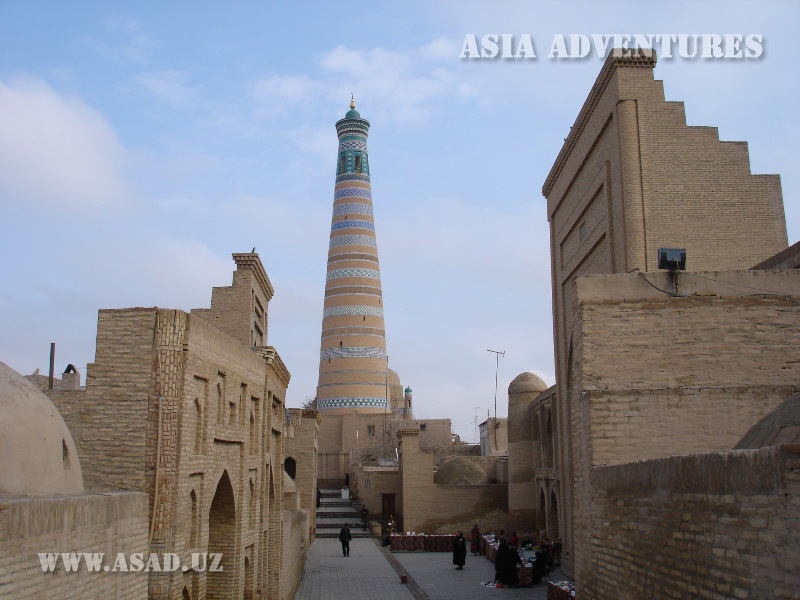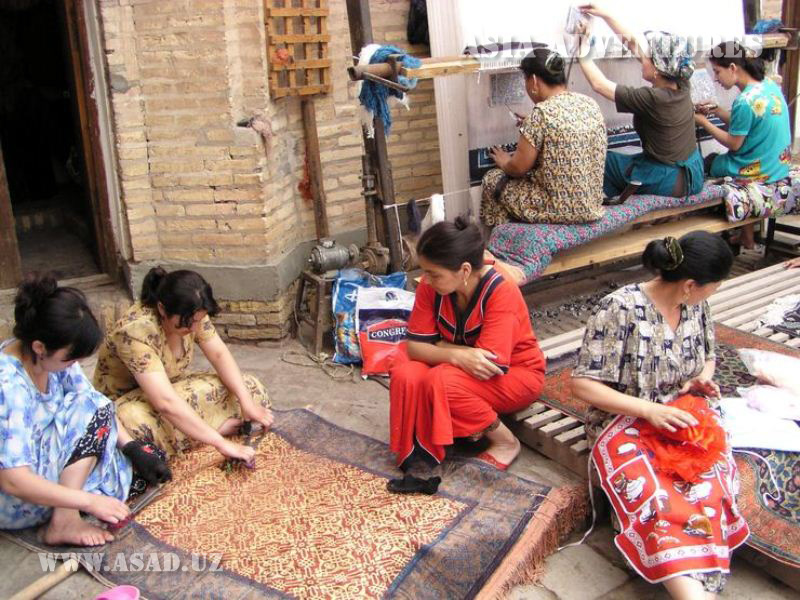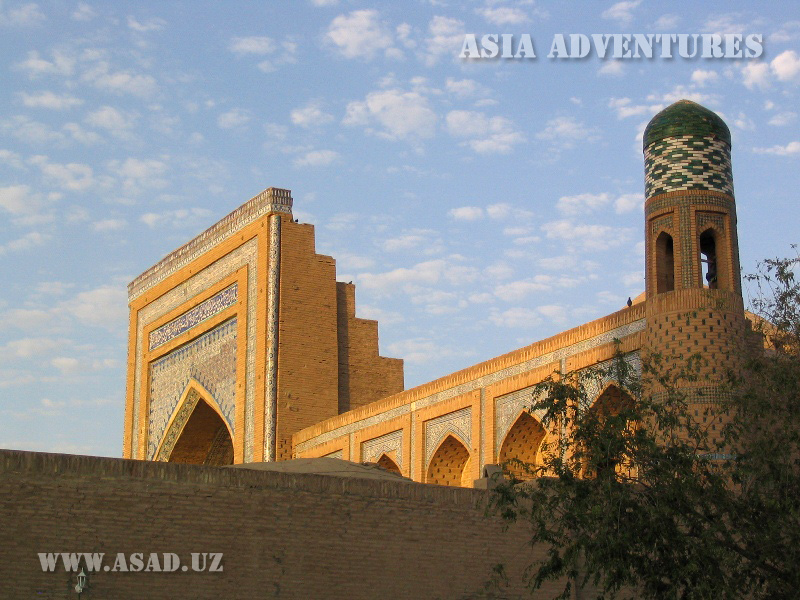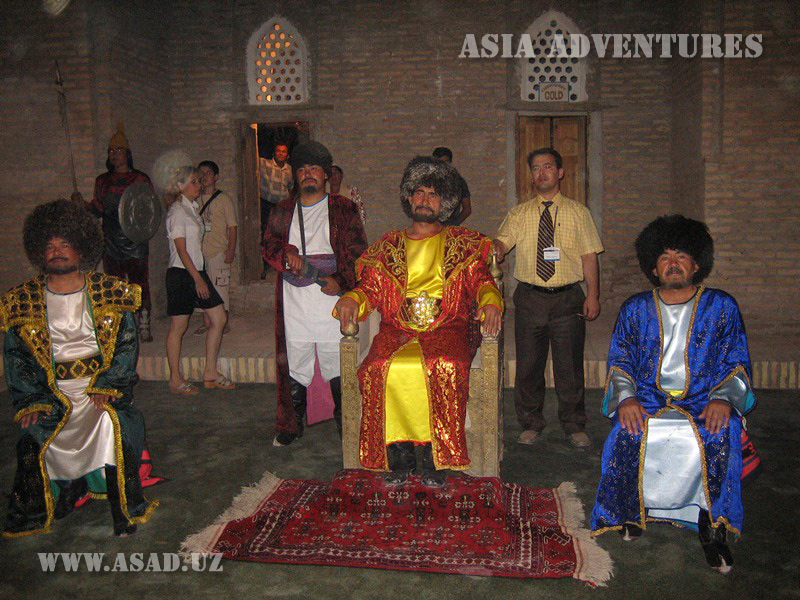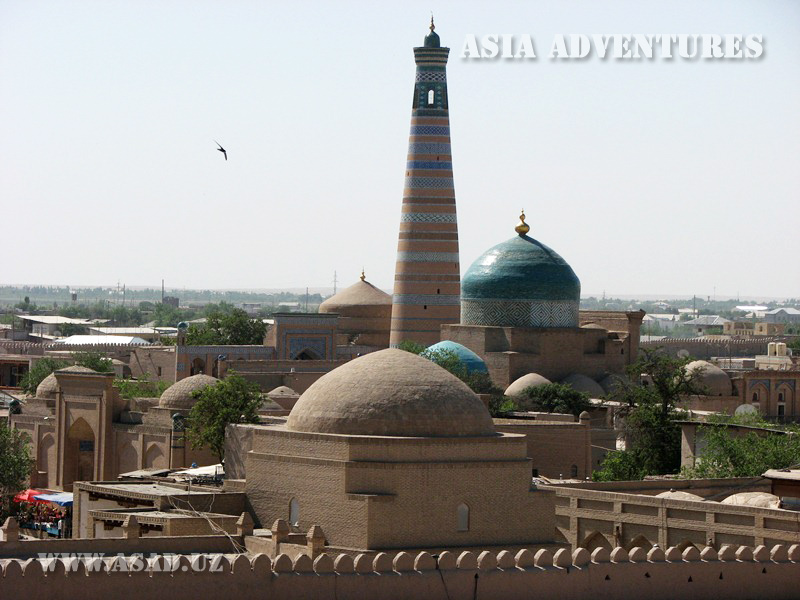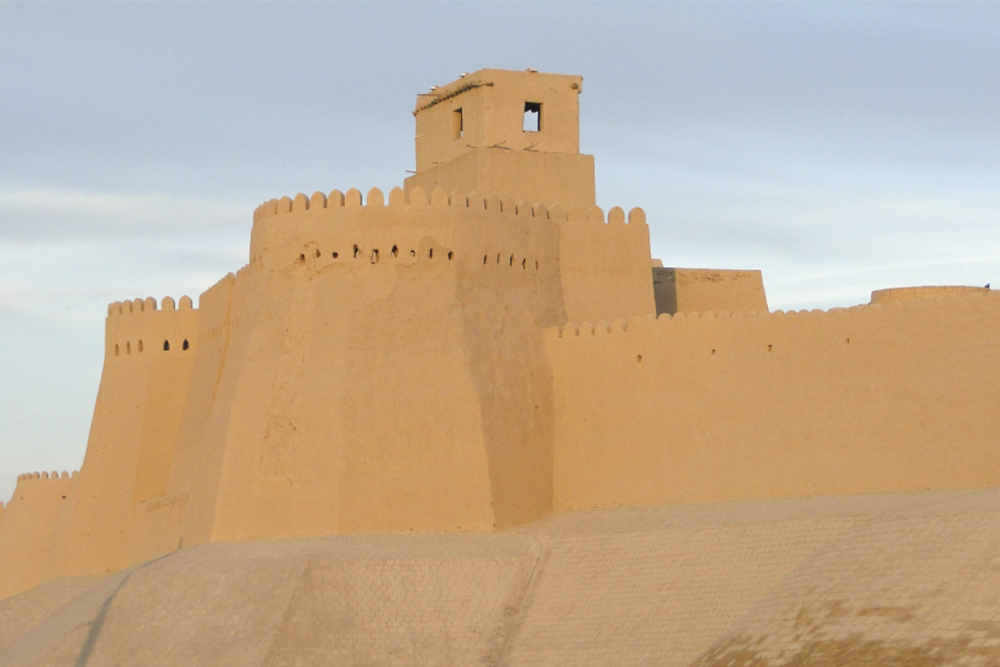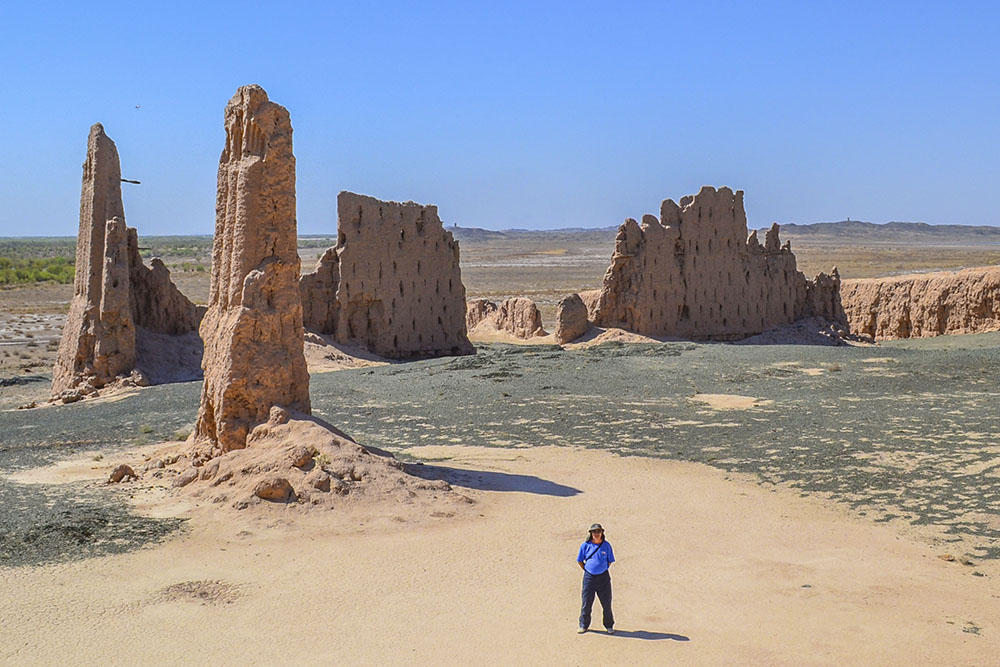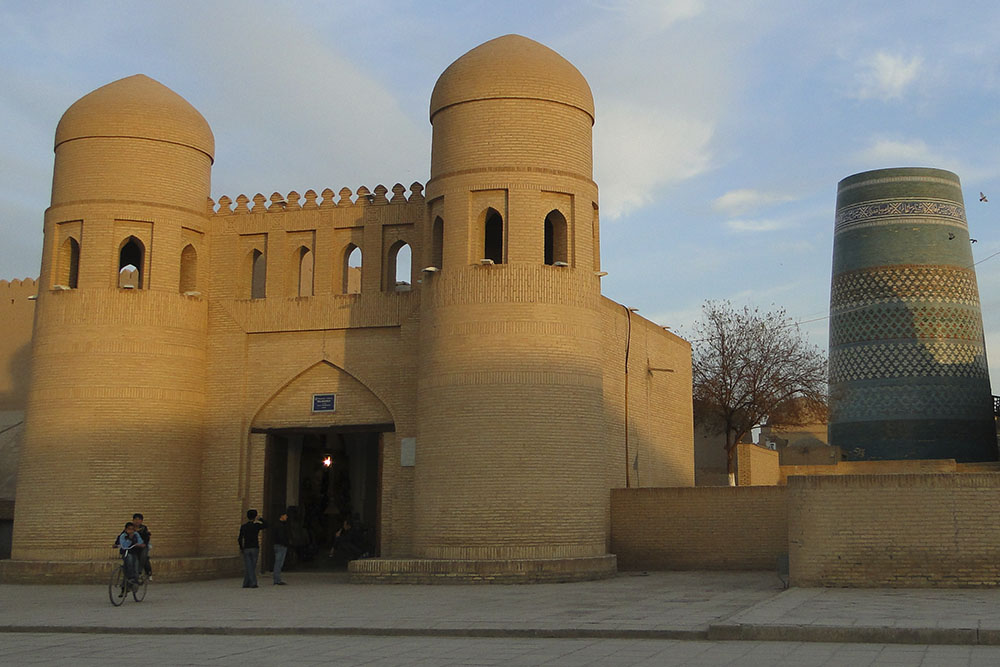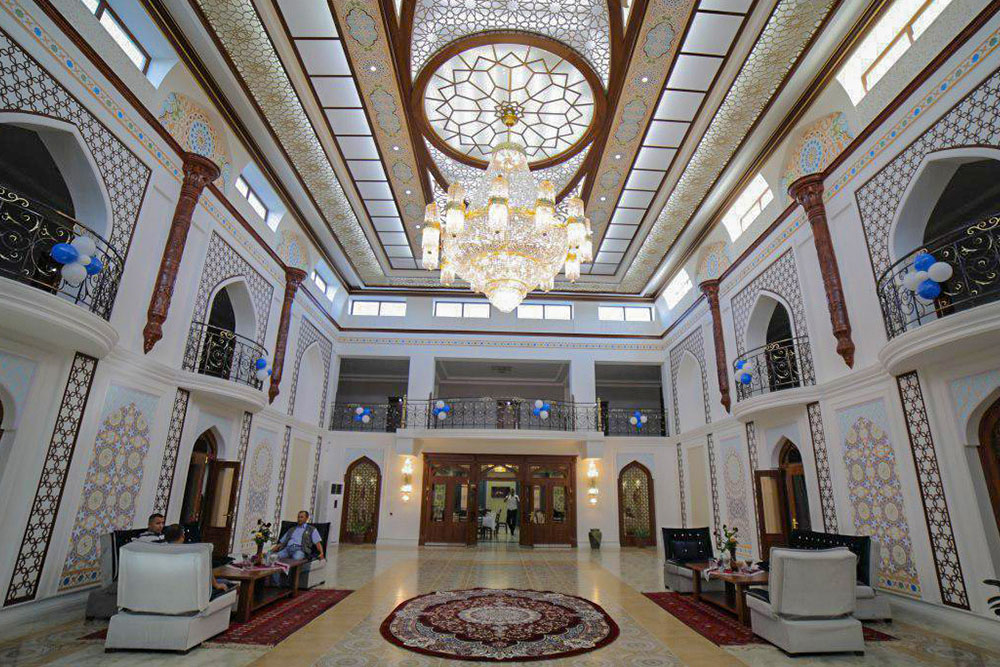First written mentioned in Persian and Arabic sources of the 10th c AD, Khiva started gaining its power and political influence since 16th-18th cc to become a capital of powerful Khiva khanate. Its today’s look the city acquired mainly in the XIX century.
Khiva’s downtown - Ichan-Kala – is unique in giving a traveller a clear and comprehensive idea on how medieval Central Asian town looked like. That is why, back in 1984, Khiva has been included in UNESCO’s world heritage list, long before same was done to Samarkand and Bukhara. more...
Within the walled area of the inner town alone, still one can see more than 60 architectural monuments: fortresses, gateways, madrasahs, mosques, mausoleums, minarets, caravanserais and bathhouses. What also makes Khiva unique is that Ichan-Kala is not only a "museum-town" but is a home for more than 4,000 people.
Over centuries Khiva, has developed its own architectural and decorative style that is embodied in multiple and extensive majolica wall panels done in "islimi" (floral) and "ghirih" (geometrical) patterns of white, black, green and turquoise blues colour.
Khiva has always been distinguished with its highly skilled craftsmen involved in woodcarving. Every now and then in town a visitor can see wooden pillars, gates, doors and windows carved in intricate ornaments.
Khiva has also been famous for its wool carpets and jewellery.
Kuhna-Arc (XVII - XIX c.c.) in translation from Turkic means "old fortress". The fortress served as official residence for generations of Khiva khans. Khan’s offices: reception hall, court of justice, chancellery, mint court, arsenal, jail as well as khan’s personal mosque and, of course, his harem have been there.
Khiva’s Juma Mosque is unique in the Central Asia for its archaic architecture (built in 1788 - 1789 c.c.). 55m x 46m square, the mosque is distinguished by its carved wooden gate, 213 carved wooden pillars and 33m tall minaret. Up to 25 of the pillars are dated from X to XVI cc. Light penetrates into the mosque only through two roof openings (skylights) that bring the interior an atmosphere of mystery and meditation and improve acoustics of the premises.
The Tash-Hauli palace (1830 - 1838 c.c.) literally means "stone courtyard" has been built by Allakuli Khan of Kungrad dynasty - the only Khiva khan who did not like living in the Kuhna Arc and built himself a new palace (that is why "old fortress"). Ambitions of the khan resulted in unique decoration of Tash-Hauli Palace that, in some way, surpasses old palace by degree of artistry and diversity of patterns – majolica, wood and marble carving and paint-ornamented ceilings.
The Pahlavan-Mahmud mausoleum (1810-1825 c.c.). Magnificent turquoise dome crowns the cross-vault of the mausoleum built upon grave of the Sufi, poet, unbeatable wrestler and patron of Khiva (1253-1322). Internal walls, ceiling and tombstone have continuous blue majolica tiling of high artistry. A holy well in the courtyard is said to produce water of curative qualities, and a bucketful from the well is believed to ensure happy future to dozens of newly married couples visiting there every day accompanied by processions of their next of kin and friends. The mausoleum is a popular place of Muslim pilgrimage, too.
Khiva is famous for its masters of handicraft - skilful wood and stone carvers, metal chasers, jewellers. Khiva’s hand woven carpets and hand embroidery - "suzannies" are world-wide known. Original produce and multiple souvenirs one can buy straight from master workshops just in the narrow streets of the old city.
The Kalta-Minor minaret (1851) means in Turkic "short minaret". It is only 26m tall but its base is 14 metres in diameter. If built to its full height, it would surpass all known minarets in the Muslim world and be 75m high! Alas, it was never to be for death of the builder – Abdulaziz Khan – happened in a battle. This minaret is the only one in the whole Central Asia to be completely coated in enamelled bricks and majolica.
The Islam-Hozha minaret (1908) is regarded as a hallmark and a landmark of Khiva. By its tapered shape, the 45m-tall minaret resembles the Kutlug-Timur minaret in Kunya-Urgench (Turkmenistan). Towering over the surrounding quarters, the minaret is seen from any part of the city. It served as a peculiar lighthouse for caravans and is best for taking photos of by afternoons.
30km away from Khiva in the sands of the Karakum desert those lovers of outdoor activities can have a walk or a swim in a big exotic lake called Shorkul ("bitter-salty lake"). The lake is a habitat for thousands of birds including pelicans, cormorants, ducks and swans.
Champions of equestrian tourism can pay a visit to local kind of farmstead involved with horse breeding – famous Akhalteke breed horses are being revived there. One can have a ride on the back of a beautiful and gracious racer as well as introduce oneself to local cowboys’ lifestyle.





